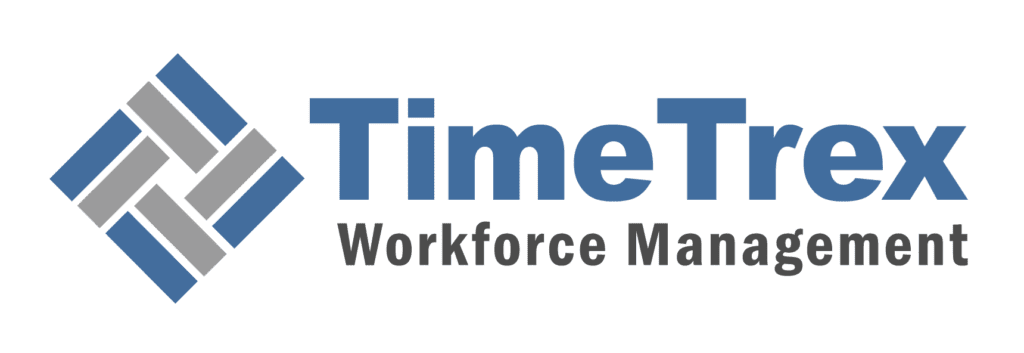NYSE Live Clock
New York Stock Exchange
Loading...
Checking Status
Market Hours: 9:30 AM - 4:00 PM ET
Time Until Close
Found our NYSE Live Clock useful? Bookmark and share it.

The New York Stock Exchange
The New York Stock Exchange (NYSE), an icon of global finance, did not emerge from a proactive vision of a grand marketplace. Instead, its origins are rooted in the reactive necessity of restoring order to a chaotic and nascent financial system. This pattern of evolution—crisis followed by structural innovation—has defined the NYSE's history for over two centuries, shaping it from an exclusive broker's club into the regulated, technological behemoth it is today.
The Genesis and Ascent of an American Institution
The Buttonwood Agreement: Order Born from Chaos
The United States' first financial panic in 1792, a crisis precipitated by the rampant speculation of William Duer and other financiers, severely rattled the young nation's credit and trust in its securities markets. In response, a group of 24 prominent stockbrokers and merchants sought to impose order. On May 17, 1792, they gathered, reputedly under a buttonwood tree on Wall Street, to sign a foundational document that would become known as the Buttonwood Agreement.
The agreement was revolutionary in its simplicity and its objectives. It contained two core provisions: first, the signatories would deal only with each other, effectively cutting out competing auctioneers; and second, they would charge a fixed, non-negotiable commission of 0.25% on all transactions. This arrangement established a closed members-only organization built on mutual trust and profitability, a structure that would remain a core feature of the exchange for over 180 years. While the NYSE would become a global symbol of free-market capitalism, its foundation was, paradoxically, an exclusive, price-fixing arrangement that prioritized stability among a select few over open competition.
The first securities traded under this new pact included three government bonds—the very instruments Alexander Hamilton had championed to fund the nation's Revolutionary War debt—and the stocks of two banks, including the Bank of New York, which became the first company listed on what would become the NYSE. As business grew, trading moved from the informal outdoor setting to indoor venues, most notably the Tontine Coffee House.
Fueling a Nation: The NYSE and 19th Century American Industrialization
The brokers' organization formalized its structure in 1817 as the New York Stock and Exchange Board, adopting its current, simpler name in 1863. The exchange's growth ran in parallel with that of the United States itself. The surge in commercial activity after the War of 1812 and, more significantly, the immense capital required to finance the nation's railroad boom in the 1830s, dramatically stimulated trading activity.
Following the Civil War, the NYSE cemented its position as the central engine of American industrialization. It became the primary venue for raising the capital needed to build the country's burgeoning iron, steel, textile, and chemical industries. This era also saw a crucial technological leap forward. The introduction of the stock ticker in 1867 revolutionized the market by allowing for the near-instantaneous transmission of price information across the country, dramatically narrowing the informational gap between Wall Street financiers and investors on "Main Street".
The Gilded Age, Panics, and the Rise of Regulation
The late 19th and early 20th centuries were characterized by rapid growth punctuated by a series of jarring financial panics in 1873, 1893, 1901, and 1907, which exposed the market's inherent volatility. The Panic of 1907 proved particularly consequential, acting as a key catalyst for the monetary reform movement that ultimately led to the establishment of the Federal Reserve System in 1913.
This cycle of speculative boom and bust reached its zenith in the "Roaring Twenties," culminating in the catastrophic Stock Market Crash of 1929. On "Black Monday" (October 28) and "Black Tuesday" (October 29), the Dow Jones Industrial Average plummeted, erasing years of gains and signaling the onset of the Great Depression. The market's collapse was so severe that the Dow would not return to its pre-crash high until November 1954.
The crash was a definitive turning point. The ensuing public outcry and federal investigations led to the passage of the Securities Act of 1933 and the Securities Exchange Act of 1934. These landmark laws created the Securities and Exchange Commission (SEC), a powerful federal agency tasked with regulating the nation's securities exchanges and protecting investors. This development brought an end to the NYSE's long era of self-regulation and established the modern regulatory framework that governs U.S. capital markets to this day.
| Year | Milestone | Significance |
|---|---|---|
| 1792 | Buttonwood Agreement is signed by 24 brokers. | Establishes a centralized trading group with fixed rules, forming the origin of the NYSE. |
| 1817 | Organization is formally constituted as the New York Stock and Exchange Board. | Marks the transition from an informal agreement to a formal institution. |
| 1863 | Name is officially changed to the New York Stock Exchange. | Solidifies the modern identity of the exchange. |
| 1867 | Stock ticker is introduced. | Revolutionizes market communications by enabling rapid, nationwide price dissemination. |
| 1903 | NYSE moves into its current main building at 18 Broad Street. | Provides the iconic physical home of the exchange, a symbol of American finance. |
| 1929 | "Black Tuesday" stock market crash. | Triggers the Great Depression and leads to fundamental reforms in financial regulation. |
| 1934 | Securities and Exchange Commission (SEC) is created. | Ends the era of self-regulation and establishes federal oversight of the exchange. |
| 1987 | "Black Monday" market crash. | Largest single-day percentage drop in Dow history; leads to the creation of "circuit breakers". |
| 2006 | Merges with Archipelago and becomes a public, for-profit company (NYSE Group, Inc.). | Marks the end of the member-owned model and a fundamental shift in business strategy. |
| 2007 | Merges with Euronext N.V. to form NYSE Euronext. | Creates a major transatlantic exchange operator, reflecting market globalization. |
| 2013 | Acquired by Intercontinental Exchange (ICE). | Places the NYSE under the ownership of a modern, technology-focused derivatives powerhouse. |
| 2018 | Stacey Cunningham becomes the first female president of the NYSE. | A historic milestone in the exchange's 226-year history. |
The Modern Corporate Structure: From Private Club to Global Conglomerate
The 21st century triggered a profound and irreversible transformation of the NYSE's business model and identity. Driven by the pressures of technological competition and market globalization, the exchange shed its centuries-old structure as a private, member-owned club to become a publicly traded, for-profit entity, and ultimately a key subsidiary within a global financial technology conglomerate.
The End of an Era: Demutualization
For most of its history, the NYSE operated as a not-for-profit corporation owned by its members. Access to its trading floor was controlled by a finite number of "seats"—limited to 1,366 since 1953—which were valuable assets bought and sold among members. The price of a seat served as a real-time barometer of Wall Street's fortunes, fetching as much as $4 million during the dot-com boom of the late 1990s before falling after its burst.
This exclusive model became untenable in the face of nimbler, lower-cost, and fully electronic competitors like NASDAQ. To raise the capital needed for massive technological investment and to compete effectively, the NYSE underwent demutualization. In 2006, it merged with Archipelago Holdings, a leading electronic trading platform, and became a publicly traded, for-profit company called NYSE Group, Inc. The last seats were sold in December 2005, with their owners receiving cash and shares in the new public corporation, marking a seismic shift from a member-cooperative to a shareholder-driven enterprise.
Transatlantic Ambitions: The NYSE Euronext Merger
Following its public debut, the NYSE Group moved quickly to expand its global footprint. In 2007, it merged with Euronext N.V., a major pan-European exchange operator, creating the first transatlantic equities marketplace, NYSE Euronext. This consolidation strategy continued in 2008 with the acquisition of its long-time rival, the American Stock Exchange (AMEX). The AMEX, known for listing smaller-cap companies and for pioneering exchange-traded funds (ETFs), was integrated and rebranded as NYSE Amex Equities, further cementing the NYSE's market dominance.
The ICE Age: Acquisition by Intercontinental Exchange
The final and most defining chapter in the NYSE's modern transformation was its acquisition by a younger, more aggressive, and technologically focused competitor. Intercontinental Exchange (ICE), founded in Atlanta in 2000, had rapidly grown into a powerhouse in the electronic trading of energy commodities and financial derivatives, largely through a series of strategic acquisitions.
The path to the acquisition was not direct. In 2011, NASDAQ and ICE launched a joint hostile bid for NYSE Euronext. However, the U.S. Department of Justice moved to block the deal, stating that it would "substantially eliminate competition" for corporate stock listings. Two years later, ICE returned with a solo bid. In 2013, it successfully acquired NYSE Euronext in a deal valued at approximately $11 billion. The strategic logic was clear: ICE's plan was to absorb the iconic NYSE brand and its premier listings business, integrate the valuable derivatives exchange, and spin off the European equities business. The completion in November 2013 firmly placed the 221-year-old Big Board under the ownership of a 13-year-old technology company from Atlanta.
The Engine Room: A Deep Dive into the NYSE's Hybrid Market Model
At the heart of the New York Stock Exchange lies a unique and evolving trading mechanism. While the iconic image of a bustling trading floor remains, the reality is a sophisticated hybrid system that blends human judgment with high-speed electronic execution. Understanding this model requires dissecting the distinct roles of its key participants—Designated Market Makers and Floor Brokers—and examining how the exchange interacts with the powerful external forces of high-frequency trading and off-exchange venues like dark pools.
The Duality of Trading: From Open Outcry to a Hybrid Future
For more than two centuries, the NYSE was synonymous with the "open outcry" system. The definitive shift occurred in 2007 with the full implementation of the NYSE's "hybrid market." This model gives traders a choice: send orders for immediate, automated execution through the electronic system, or route orders to the trading floor to be handled by human brokers in the traditional auction market. While a vast majority of order volume is now delivered electronically, the physical floor and its human specialists remain a core and deliberate component of the NYSE's value proposition.
The Human Element: Designated Market Makers and Floor Brokers
The NYSE's hybrid model is anchored by two types of human market participants.
The Designated Market Maker (DMM) is the cornerstone of this system. A single DMM firm is assigned to each listed security and has mandated obligations to maintain a "fair and orderly market". Their key responsibilities include providing liquidity by using firm capital to trade against imbalances, dampening volatility, especially during opening and closing auctions, and facilitating price discovery.
| Obligation | NYSE Designated Market Maker (DMM) | Traditional Market Maker (e.g., on NASDAQ) |
|---|---|---|
| Accountability | One DMM firm assigned per security, creating a single point of accountability. | Multiple, competing market makers per security. |
| Capital Requirement | High capital requirements ($75 million+ plus inventory-risk capital). | Lower capital requirements (e.g., $1 million). |
| Auction Facilitation | Yes. Required to commit capital and facilitate orderly opening and closing auctions. | No. Auctions are typically fully automated. |
| Quoting at NBBO | Yes. Must quote at the National Best Bid and Offer (NBBO) for a specified percentage of the time. | No, or less stringent requirements. |
| Volatility Moderation | Yes. Has affirmative obligation to add liquidity to dampen volatility when public liquidity is insufficient. | No affirmative obligation to trade against the market to dampen volatility. |
| Human Judgment | Yes. A dedicated trader provides human oversight, judgment, and communication. | No. Primarily algorithmic and automated. |
The Floor Broker is the second key human component. These individuals are employees of member firms who work on the exchange floor, acting as agents for their clients, typically large institutions. They provide a "high-touch" service, navigating the auction market to execute large or complex orders, aiming to achieve the best possible price while minimizing market impact.
The Algorithmic Tide: High-Frequency Trading and its Ramifications
The modern market is dominated by High-Frequency Trading (HFT), which uses algorithms and fast networks to execute massive numbers of trades. Proponents argue HFT provides liquidity and narrows spreads, while critics counter that it creates "ghost liquidity" and exacerbates volatility. Recognizing this reality, the NYSE created the Supplemental Liquidity Provider (SLP) program, giving HFT firms incentives to add liquidity to the exchange's order book, representing a strategic adaptation to modern market forces.
The Shadow Market: Dark Pools and Off-Exchange Trading
Another transformative force is the rise of "dark pools." These are private, off-exchange trading venues that allow institutional investors to trade large blocks of stock anonymously. This has led to significant market fragmentation, with some estimates suggesting 40-50% of all U.S. stock trading volume now occurs away from public exchanges. This raises serious questions about the integrity of public price discovery. While the NYSE competes with dark pools, many exchange operators, including the NYSE itself, have operated their own dark pools to capture this volume.
The Price of Admission: An Analysis of NYSE Listing and Governance Standards
A listing on the New York Stock Exchange is widely regarded as a hallmark of corporate maturity and stability, a perception built on a rigorous set of quantitative and qualitative standards.
Quantitative Hurdles: The Financial Gauntlet
The NYSE enforces stringent financial prerequisites. For an initial listing, a domestic company must demonstrate sufficient public float and shareholder base (e.g., 1.1 million public shares and 400 round-lot shareholders). It must also meet market value and financial soundness tests:
- Market Value: The aggregate market value of publicly held shares must be at least $40 million for an IPO or $100 million for a transfer.
- Financial Soundness: Companies can meet an Earnings Test (e.g., aggregate pre-tax earnings of at least $10 million over the last three years) or a Global Market Capitalization Test ($200 million minimum).
Qualitative Mandates: The Corporate Governance Framework
Beyond the numbers, the NYSE mandates a strong corporate governance framework. Key rules include requiring a majority-independent board of directors, fully independent audit, compensation, and nomination committees, and shareholder approval for equity-based compensation plans.
The Big Board vs. The Tech Hub: A Comparative Analysis with NASDAQ
The competitive landscape of U.S. stock listings is a duopoly dominated by the NYSE and NASDAQ. They have cultivated distinct ecosystems that appeal to different types of companies.
| Feature | New York Stock Exchange (NYSE) | NASDAQ Stock Market |
|---|---|---|
| Founding Year | 1792 | 1971 |
| Market Model | Auction Market | Dealer / Market Maker Market |
| Trading Mechanism | Hybrid model combining electronic trading with a physical trading floor and human oversight. | Fully electronic exchange with no physical trading floor. |
| Key Human Role | Designated Market Maker (DMM): A single, accountable specialist per stock. | Multiple competing Market Makers. |
| Company Profile | Traditionally older, established, large-cap "blue-chip" and industrial companies. | Known for technology, biotechnology, and younger, high-growth companies. |
| Listing Requirements | Generally stricter, with a greater emphasis on historical profitability. | More flexible, with alternative paths to listing that do not require profitability. |
| Listing Fees | Higher. Entry and annual fees can total up to $500,000. | Lower. Fees are generally capped at a much lower level, for example, around $159,000. |
| Primary Market Index | Dow Jones Industrial Average (DJIA) and the S&P 500. | The NASDAQ Composite Index and the NASDAQ-100. |
The NYSE's Economic Footprint: Capital Formation, Crises, and Market Barometers
The New York Stock Exchange is more than a trading venue; it is a cornerstone of the U.S. economy, facilitating capital formation, chronicling financial crises, and serving as a vital barometer of corporate health.
Fueling Growth: The NYSE as a Capital Formation Engine
The fundamental economic role of a stock exchange is the efficient mobilization and allocation of capital. By providing a regulated platform for companies to conduct IPOs and subsequent offerings, the exchange enables them to raise money to fund growth, which drives job creation and economic expansion. The liquidity it provides encourages investment, and the continuous trading serves an essential informational role, guiding capital allocation throughout the economy.
A History of Volatility: Major Market Crashes and Their Aftermath
The history of the NYSE is inextricably linked with financial crises. These events, while destructive, have served as powerful catalysts for regulatory evolution. Each crash exposed a vulnerability, leading to reforms designed to prevent a recurrence.
| Crash | Dates | Peak-to-Trough Decline | Key Regulatory/Structural Outcome |
|---|---|---|---|
| The Great Crash | 1929–1932 | ~89% (Dow) | Creation of the Securities and Exchange Commission (SEC); end of the self-regulation era. |
| Black Monday | Oct. 19, 1987 | ~22.6% in one day (Dow) | Implementation of market-wide "circuit breakers" (mandatory trading halts). |
| Dot-Com Bust | 2000–2002 | ~54% (S&P 500, including 2008 crisis) | Increased scrutiny of analyst conflicts of interest; reinforced focus on corporate governance. |
| Global Financial Crisis | 2007–2009 | ~54% (S&P 500, from 2000 peak) | Dodd-Frank Wall Street Reform Act; introduction of NYSE Supplemental Liquidity Providers (SLPs). |
| COVID-19 Crash | Feb–Mar 2020 | ~34% in one month (S&P 500) | Demonstrated the speed and volatility of modern markets; tested post-crisis market infrastructure. |
Reading the Market: The NYSE and Major Indices
It is essential to distinguish between the exchange (the venue) and the indices (the scorecards). The NYSE is the marketplace, while the Dow Jones Industrial Average (DJIA) and the S&P 500 are benchmarks that measure the performance of stocks, many of which are listed on the NYSE.
- The Dow Jones Industrial Average (DJIA): Tracks 30 large, well-established U.S. "blue-chip" companies. It is a price-weighted index, and the majority of its components are listed on the NYSE.
- The S&P 500: A broader index tracking 500 of the largest U.S. companies. It is market-capitalization-weighted and is considered the best single gauge of large-cap U.S. equities. A significant majority of S&P 500 companies, about 70%, are listed on the NYSE.
The Future of the Exchange: Navigating Disruption and Redefining Value
The NYSE stands at a critical juncture, facing a future being rapidly reshaped by technological disruption and market globalization. Its continued relevance will depend on a delicate strategic balancing act: preserving its legacy brand while embracing the hyper-technological world of its parent company, ICE.
The Next Frontier: Technological and Global Disruption
The financial industry is being transformed by technologies that are fundamentally altering how markets operate.
- Artificial Intelligence and Data Analytics: AI is poised to power everything from trading algorithms to market surveillance. This presents a significant opportunity for the NYSE to enhance its functions and monetize its vast streams of market data.
- Blockchain and Digital Assets: The rise of blockchain and Decentralized Finance (DeFi) presents a long-term challenge, potentially disintermediating traditional financial institutions. The NYSE is actively exploring how to support the trading of new digital assets.
- Globalization and Competition: The NYSE's competitive arena is no longer just domestic but a global contest with major exchanges in London, Hong Kong, and beyond.
Strategic Outlook
The near-term economic environment presents a mixed picture with concerns about inflation and interest rates, yet corporate fundamentals remain broadly healthy. Within this context, the NYSE faces distinct challenges and opportunities.
Challenges
- Market Fragmentation: The migration of trading volume to "dark" off-exchange venues erodes the primacy of public price discovery.
- Technological Arms Race: The exchange must engage in a perpetual and costly technological arms race to keep pace with HFT firms and cybersecurity threats.
- Regulatory Headwinds: Increased scrutiny from regulators on the fragmented nature of modern markets could impact business models.
Opportunities
- Leveraging the Premier Brand: The NYSE's greatest asset is its iconic brand, which attracts leading companies and commands premium fees.
- The "High-Touch" Differentiator: The human judgment of the DMM model is a powerful unique selling proposition, particularly during times of market stress.
- Data Monetization: As part of ICE, the NYSE is well-positioned to develop and sell sophisticated data products and analytics.
Ultimately, the NYSE's future path is a synthesis of its past and future. It must leverage the technological prowess of ICE while preserving the human-centric model that underpins its brand. The greatest threat may come from market fragmentation and decentralization, which challenge the very concept of a central, lit exchange. How the Big Board navigates this transition will determine its role in the financial landscape for the century to come.
Enhance Your Team's Efficiency
Stay ahead in a fast-paced world. Discover how TimeTrex's mobile time clock solutions can streamline your operations and boost productivity. Perfect for teams of any size, on the floor or in the field.
Explore the TimeTrex Mobile Time ClockDisclaimer: The content provided on this webpage is for informational purposes only and is not intended to be a substitute for professional advice. While we strive to ensure the accuracy and timeliness of the information presented here, the details may change over time or vary in different jurisdictions. Therefore, we do not guarantee the completeness, reliability, or absolute accuracy of this information. The information on this page should not be used as a basis for making legal, financial, or any other key decisions. We strongly advise consulting with a qualified professional or expert in the relevant field for specific advice, guidance, or services. By using this webpage, you acknowledge that the information is offered “as is” and that we are not liable for any errors, omissions, or inaccuracies in the content, nor for any actions taken based on the information provided. We shall not be held liable for any direct, indirect, incidental, consequential, or punitive damages arising out of your access to, use of, or reliance on any content on this page.
Trusted By
Trusted by 3.2M+ Employees: 21 Years of Service Across Startups to Fortune 500 Enterprises
Join our ever-growing community of satisfied customers today and experience the unparalleled benefits of TimeTrex.










Strength In Numbers
Join The Companies Already Benefiting From TimeTrex
Time To Clock-In
Start your 30-day free trial!
Experience the Ultimate Workforce Solution and Revolutionize Your Business Today
- Eliminate Errors
- Simple & Easy To Use
- Real-time Reporting

Saving businesses time and money through better workforce management since 2003.
Copyright © 2025 TimeTrex. All Rights Reserved.
